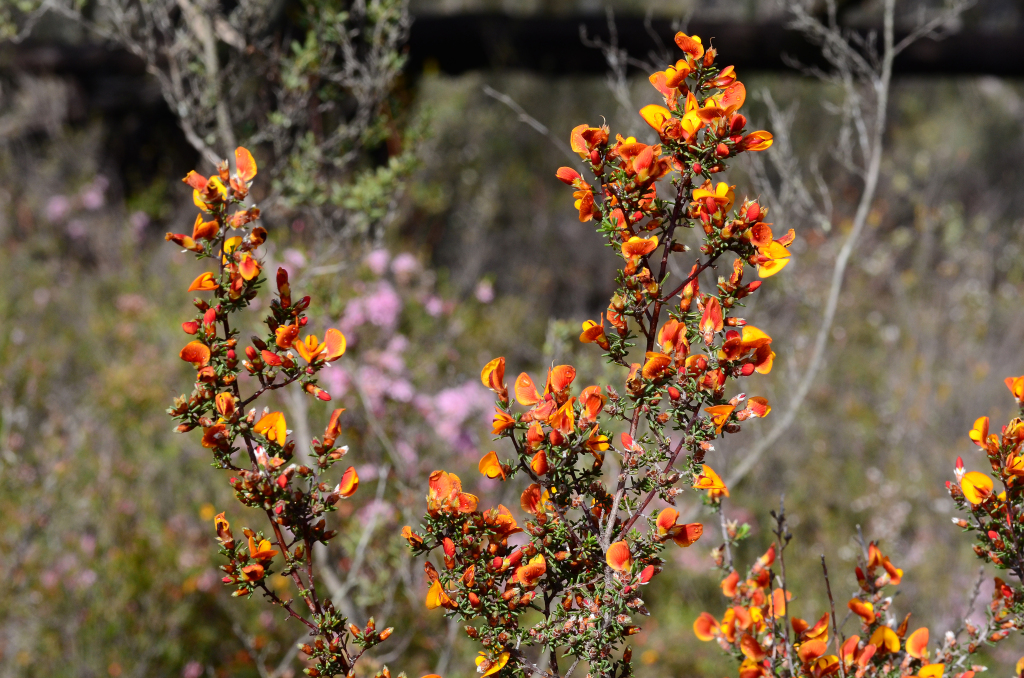Pultenaea prostrata
Benth. ex Hook.f. Silky Bush-peaRigid, wiry shrub to 50 cm high, erect or spreading; stems pubescent. Leaves alternate, terete, 4–8 mm long, channelled above, slightly scabrous, hairy (usually silvery) when young, ultimately glabrous; apex obtuse, recurved; stipules lanceolate, c. 1 mm long. Flowers borne singly at tips of short lateral branchlets; bracts broadly ovate, 2–3.5 mm long, hairy, margin ciliate, persistent; calyx 5–7 mm long, covered with long, silky hairs, lobes tapered to long, slender points; bracteoles attached at base of calyx tube, broadly ovate, 4–5 mm long, almost enveloping calyx, hairy, margin ciliate; standard 8–10 mm wide; ovary and lower half of style with long pale hairs. Pod ovate, almost hidden within calyx and bracts. Flowers Sep.–Nov.
LoM, MuM, Wim, GleP, VVP, VRiv, OtP, Gold, CVU, GGr, DunT, NIS, MonT. Also SA, Tas. Scattered through central and western areas in dry forest and heath, including Little and Big Deserts, Casterton area, Whroo Forest and Maryborough district. Scattered through western, central and north-eastern areas in dry forest and heath, including Little and Big Deserts, Casterton, Whroo Forest, Maryborough, Chiltern and Beechworth areas. Rare in the Grampians where recorded from near Mt Zero and in Billywing heathland.
Pultenaea prostrata is often sympatric and sometimes confused with both P. laxiflora and P. tenuifolia, but can be distinguished by the single-flowered inflorescence with broad, overlapping, persistent bracts which obscure the calyx tube, and by the very broad bracteoles attached at the base of the calyx tube.
Corrick, M.G. (1996). Pultenaea. In: Walsh, N.G.; Entwisle, T.J., Flora of Victoria Vol. 3, Dicotyledons Winteraceae to Myrtaceae, pp. 765–793. Inkata Press, Melbourne.
 Spinning
Spinning
